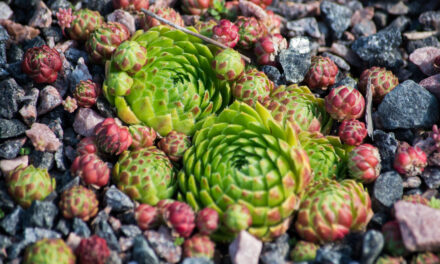Give Your Tired Sempervivum a Makeover
After a while, your hens and chicks wear themselves out.
Sometimes the roots are waterlogged or have bugs, or the soil needs to be replenished due to breaking down into finer particles. Sempervivum needs good drainage with some larger pieces of gravel or pumice to do well, but often, this is lacking in the soil.
You need to transplant the poor things.
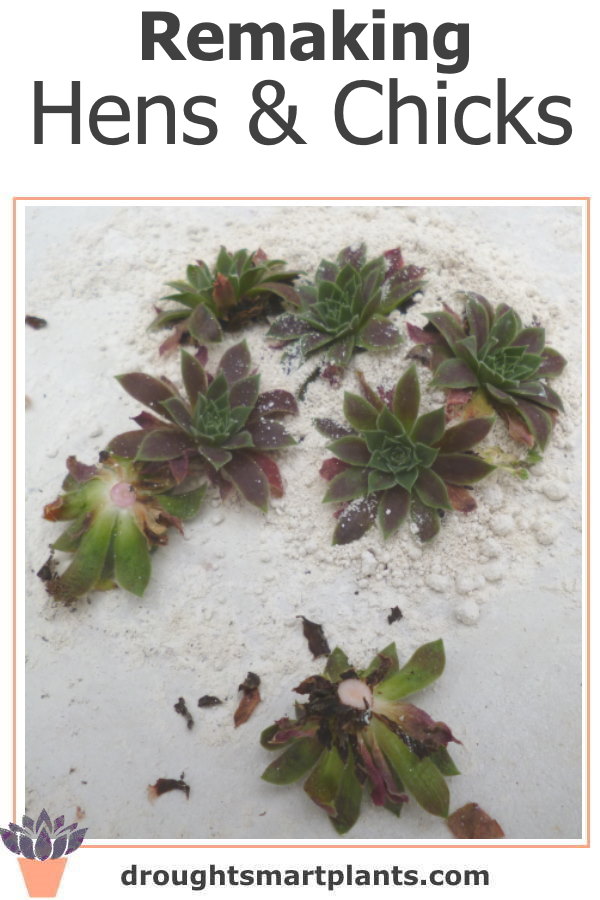
But wait! It’s not necessary to go to that extreme as these plants are so easy to behead and then re-root.
They actually like to be dealt with harshly. I am amazed at how tough they are, and how well they adapt to all kinds of conditions, which would kill off most plants.
These hardy succulents actually do better with what seems like very harsh treatment.
Simply cut them off at the base of the rosette, dust them with some diatomaceous earth, and set them on top of some new soil.
Discard the root and worn-out soil portion.
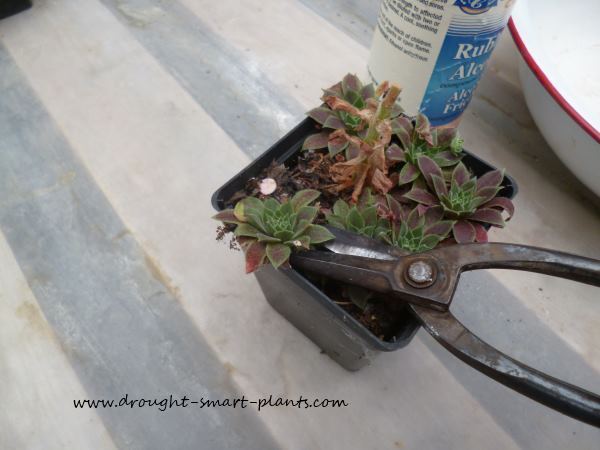
Diatomaceous earth is a powder made from the pulverized skeletons of fossilized sea creatures, and it is extremely useful for insect control.
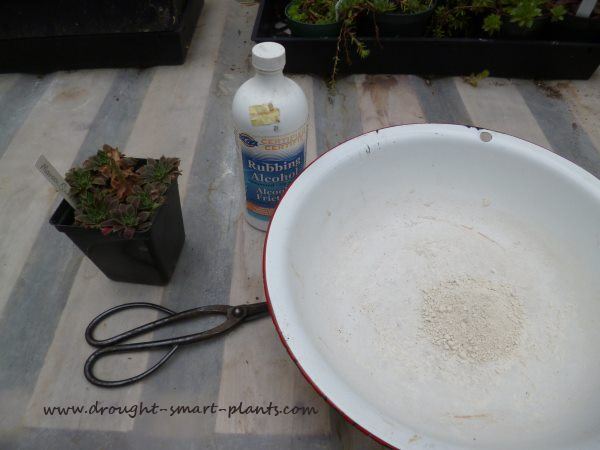
To prevent any transfer of disease between plants, it’s also a good idea to sterilize your cutting instrument – by dipping them in isopropyl alcohol (also called rubbing alcohol).
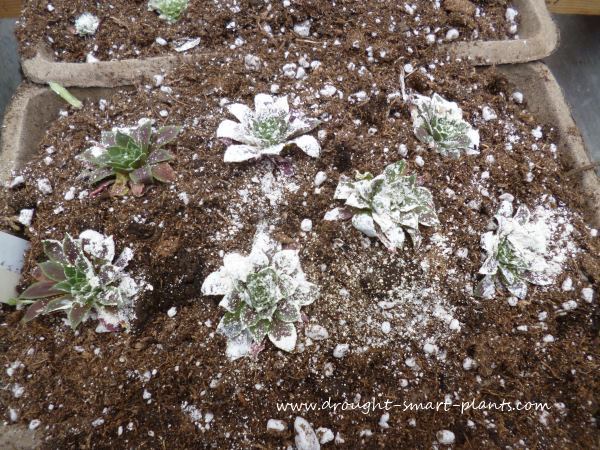
Within a week or two, they’ll have made brand new roots, delving down into the new soil for nutrients, and getting established.
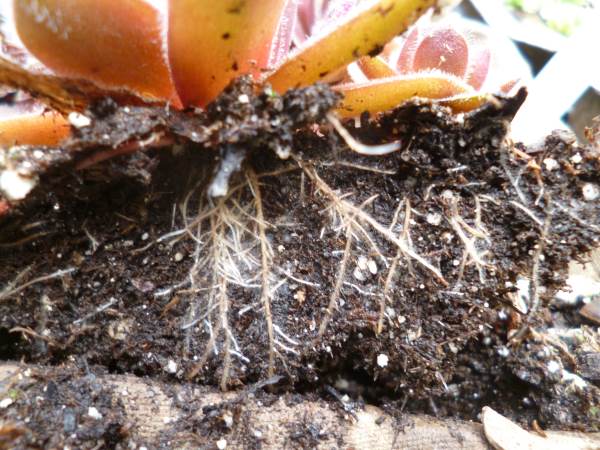
I do this routinely with older clumps or those in the nursery as stock plants because once the pot or tray has become root bound these sturdy mother plants won’t produce as many chicks, and they won’t be as healthy.
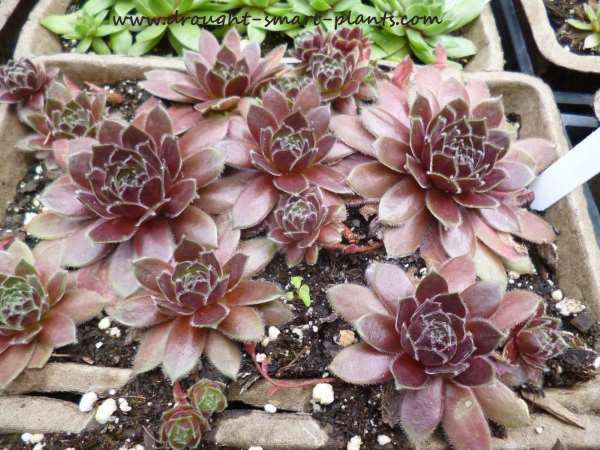
In a month or two, they’ll be fully established and growing happily producing their chicks.
I do this every few years to get the vigor and vitality back in mother plants that are getting tired.

